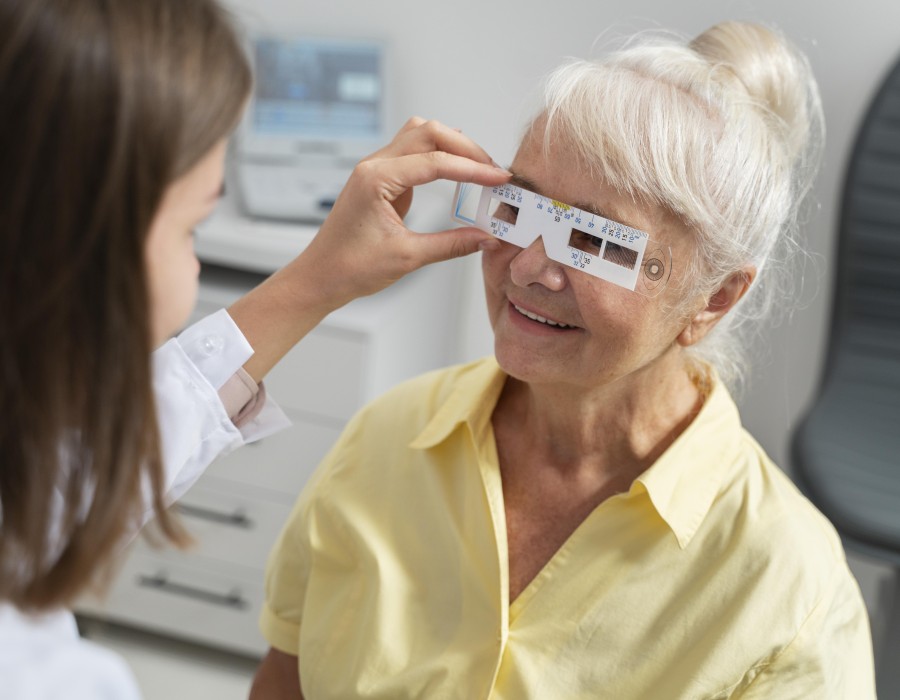If you’ve ever noticed that one of your eyes doesn’t seem to focus as well as the other, you may be dealing with more than just tiredness. This could be a sign of amblyopia, also known as lazy eye, a vision development condition that affects millions worldwide. While often diagnosed in childhood, many adults live with it unknowingly.
This blog breaks down the signs, causes, and treatment options for amblyopia using simple, expert-backed insights to help you take control of your eye health.
Understanding Amblyopia: More Than Just a “Lazy Eye”
Amblyopia is a neuro-visual disorder where the brain fails to properly process visual input from one eye. This typically leads to weakened vision in the affected eye. Over time, the brain starts relying more on the stronger eye and ignores signals from the weaker one.
While it’s often called lazy eye, the eye itself isn’t lazy it’s the brain-eye connection that’s disrupted.
Root Causes of Amblyopia
The development of amblyopia is usually linked to early childhood factors. Common causes include:
- Strabismus: Misalignment of the eyes where one eye turns inward or outward.
- Refractive Errors: A large difference in prescription between the two eyes (astigmatism, nearsightedness, or farsightedness).
- Visual Obstructions: Congenital cataracts, eyelid drooping (ptosis), or anything blocking the visual pathway in one eye.
Key Signs You Might Have Amblyopia
Amblyopia often goes unnoticed, especially in adults, because the stronger eye compensates. Some signs to watch for:
- Blurred or reduced vision in one eye
- Trouble judging depth or distance
- Difficulty reading or focusing for long periods
- Head tilting or squinting with one eye
- Eye strain during digital screen usage
- In children: bumping into objects, covering one eye, or poor school performance
How Eye Specialists Diagnose Amblyopia
A full diagnostic exam by an optometrist or ophthalmologist includes:
- Visual acuity testing for both eyes
- Eye alignment evaluation (to detect strabismus)
- Pupil reflex and movement analysis
- Assessment of binocular vision (how both eyes work together)
Early detection, especially before the age of 7, leads to the most effective outcomes.
Is It the Same as Strabismus? Let’s Clear It Up
While amblyopia and strabismus are related, they are not the same:
- Strabismus refers to eye misalignment.
- Amblyopia occurs when the brain favors one eye and suppresses input from the other.
Important Note: Long-term, untreated strabismus can lead to amblyopia.
Can Amblyopia Go Unnoticed?
Yes. Many children (and adults) don’t know they have amblyopia because the stronger eye works perfectly. However, relying on one eye reduces visual performance over time, especially for tasks requiring binocular vision or depth perception like driving, reading, or playing sports.
Treatment Options: Beyond Eye Patching
In the past, amblyopia treatment often involved covering the stronger eye with a patch. While still used in some cases, modern advancements have introduced non-invasive, computer-assisted therapies like the Bynocs system.
Evidence-Based Options Include:
- Prescription glasses or contact lenses for correcting refractive errors
- Vision therapy exercises train the brain to use both eyes
- Game-based digital treatments are designed to restore binocular balance
- Software-based therapies like Bynocs, which offer guided eye-training programs from home
These newer therapies work by reactivating the suppressed eye and improving communication between both eyes and the brain.
Does Age Matter? Can Adults Be Treated Too?
This is one of the most common queries.
Yes, adults can improve vision with amblyopia treatment.
Although the brain is most flexible in childhood (neuroplasticity), evidence now shows that adult brains can also retrain visual processing with consistent and targeted therapy.
Why Early Detection Is So Important
Untreated amblyopia can lead to:
- Permanent vision loss in one eye
- Reduced ability to perform fine motor skills
- Difficulties in reading, driving, or physical activities
- Emotional challenges, especially in children
This is why vision screening is recommended by age 3, and earlier if there’s a family history of eye conditions.
Take the Next Step: What to Do If You Suspect Amblyopia
If any of the symptoms mentioned feel familiar, here’s what to do:
- Book a comprehensive eye exam with a specialist
- Ask about lazy eye treatment for adults or kids
- Explore therapy options like digital vision training
- Consider innovative platforms like Bynocs, especially if you're seeking non-surgical solutions from home
Conclusion: Amblyopia Is Treatable At Any Age
Amblyopia doesn’t mean you’re stuck with poor vision forever. Whether it’s your child or yourself, early action matters. With today's advanced treatments, especially those supported by AI-driven platforms and visual neuroplasticity research, you can strengthen your vision and improve your quality of life.
Trust your vision to science. Don’t ignore what your eyes might be trying to tell you.





Comments